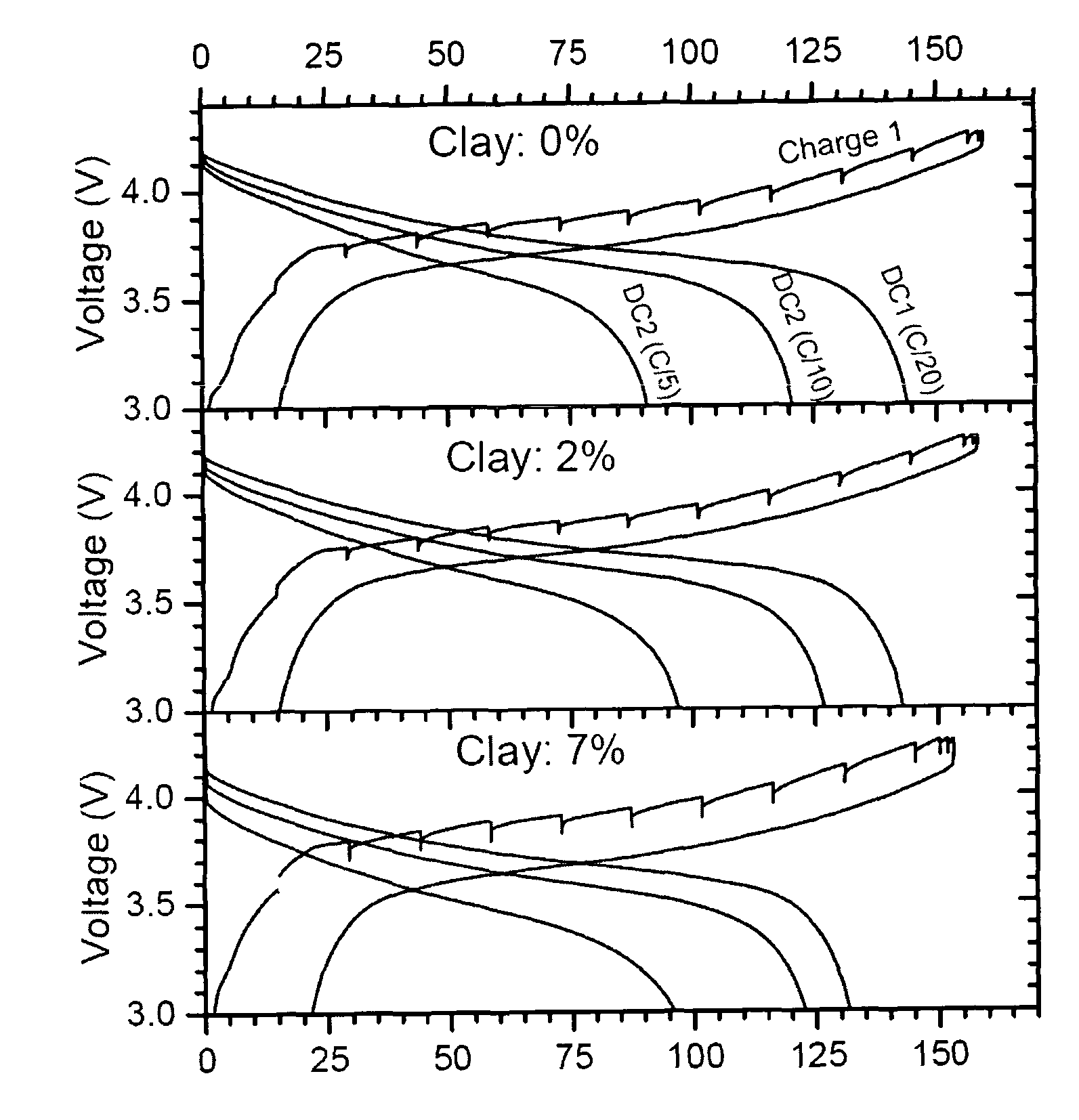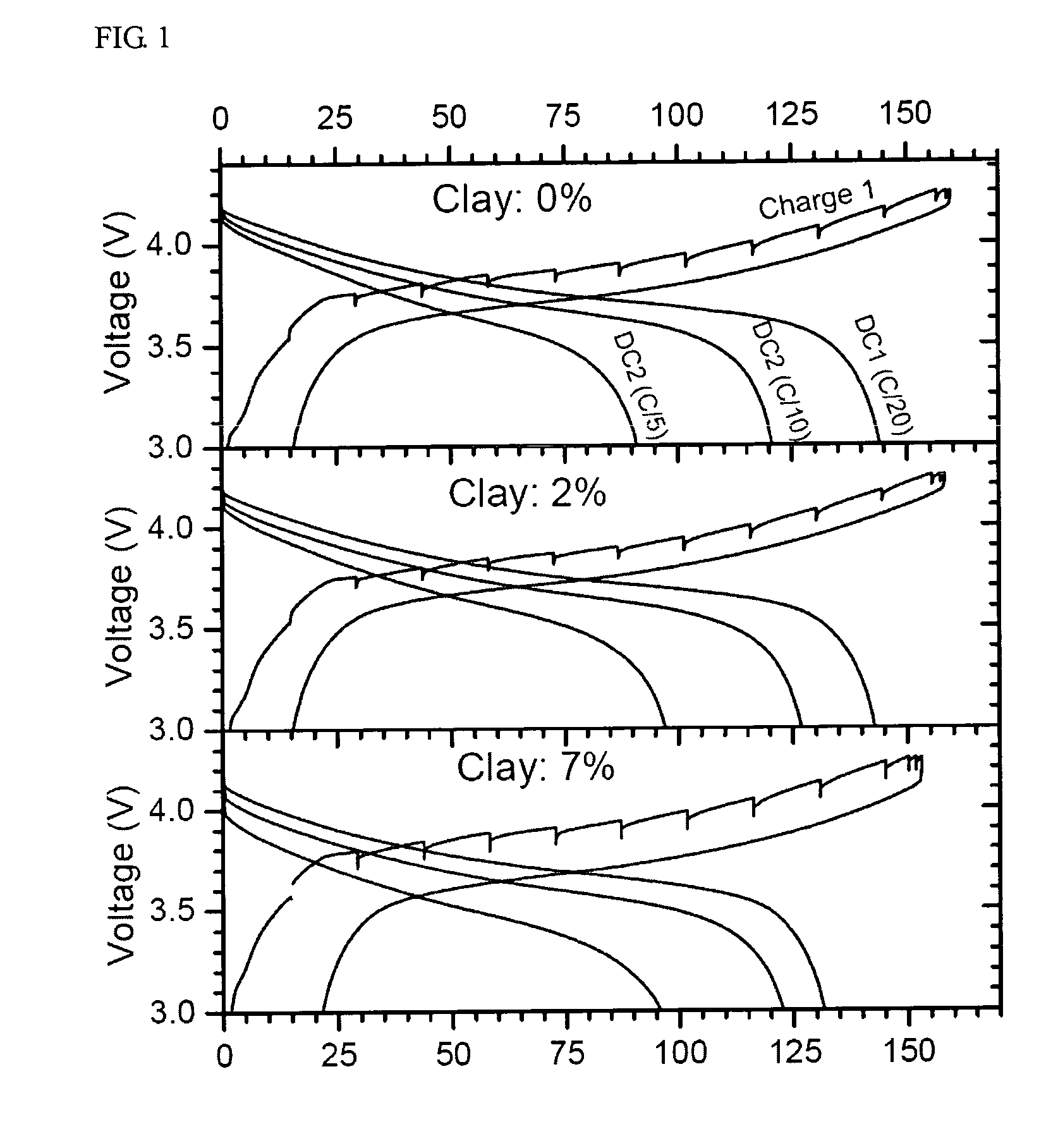Paste electrolyte and rechargeable lithium battery containing the same
a rechargeable lithium battery and electrolyte technology, applied in the direction of non-aqueous electrolyte cells, cell components, electrochemical generators, etc., can solve the problems of low li transference number, dramatic undesired effects, poor rate performance, etc., to improve the electrochemical properties of rechargeable lithium batteries, fast charge/discharge properties, and the effect of reducing the lithium transport ra
- Summary
- Abstract
- Description
- Claims
- Application Information
AI Technical Summary
Benefits of technology
Problems solved by technology
Method used
Image
Examples
example 1
Swelling of Clay in Electrolyte
[0040]A commercial synthetic clay (“optigel SH”, SuedChemie, Germany) was used. The clay was in the form of a coarse, free flowing powder. The clay was dried at 180° C. to lower the water content. 10 g of the dried clay was added to 20 g of electrolyte (1M LiPF6 in EC / EMC (1:2)). After several weeks of storage at room temperature in a sealed PP vial in a glovebox, a homogeneous white paste was achieved. No mechanical force like grinding, agitating etc. was applied. This experiment demonstrates that the used clay swells in an electrolyte with medium dielectric constant.
example 2
Swelling of Clay in NMP
[0041]A mixture of 86% NMP and 14% (w / w) clay was ballmilled using a planetary mill. A semi-transparent, homogeneous white paste was achieved.
example 3
Addition of Clay Paste to Electrode Slurries
[0042]The clay-NMP paste of Example 2 was added to an NMP-based anode (MCMB) and an NMP-based cathode (Li-manganese-spinel) slurry, respectively, followed by homogenizing. The total content of clay per active materials in the slurry was 1% (w / w). The compositions (active material:PVDF:carbon black) of the cathode and anode slurry were 94:3:3 and 94.5:4.5:1, respectively.
[0043]The slurries were coated on aluminum foil and copper foil, respectively, and then dried. An improved adhesion was observed, compared with electrodes coated from the slurry without clay.
PUM
| Property | Measurement | Unit |
|---|---|---|
| dielectric constant | aaaaa | aaaaa |
| volume fraction | aaaaa | aaaaa |
| volume fraction | aaaaa | aaaaa |
Abstract
Description
Claims
Application Information
 Login to View More
Login to View More - R&D
- Intellectual Property
- Life Sciences
- Materials
- Tech Scout
- Unparalleled Data Quality
- Higher Quality Content
- 60% Fewer Hallucinations
Browse by: Latest US Patents, China's latest patents, Technical Efficacy Thesaurus, Application Domain, Technology Topic, Popular Technical Reports.
© 2025 PatSnap. All rights reserved.Legal|Privacy policy|Modern Slavery Act Transparency Statement|Sitemap|About US| Contact US: help@patsnap.com


